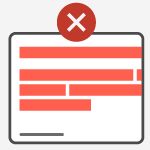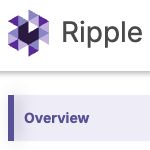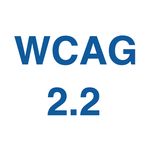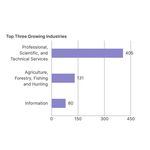Web accessibility and inclusion
I was a teenager when the internet arrived in my household. I remember it as a window opening to the world. All of a sudden I had at my disposal more information than I could fathom, instantly. Later when I became a web developer, I understood that this easy access to knowledge was even more extraordinary than I had thought. And that is because digital media are endlessly adaptable. Certain people cannot access certain physical media, for instance because of a disability — a blind person cannot read a printed book. But the nature of digital media allows it to be presented in different ways. So the same blind person may not be able to look at a web page on a screen, but she can have a screen reader read it to her. Digital products can — and should — be multimodal.
If the information is only presented in one way (visual, audio…) then it will inevitably exclude the people for whom that particular modality isn't accessible.
So not only do digital technologies give us unprecedented access to an ocean of knowledge, they also make this access much easier for all. And it's not just access to knowledge: Computers allow us to communicate more easily, and again, lower the barrier to access for everybody. A phone in the 1950's or the 1980's was of no use to deaf people. Now they can use text messages, transcription tools and so on.
If you had asked me years ago about the web of the future I may have said something about snappy page transitions, video or complex animations. Now what I think of this adaptability: web content that can be accessed by all sorts of machines, in all sorts of contexts; by anyone, regardless of the devices they use or how they use them. We can, and should, build things so that they will work on a device that doesn't exist yet. Back in 2000 your Flash app may have looked dazzling and much cooler than a boring web page. But it was only accessible to some people. And now it is accessible to nobody.
At its core a computer is a device that presents information to and collects information from a user. In theory, because the web page consists not of pixels but of code, it isn't tied to a particular modality and can adapt to the needs or preferences of the user. In theory. Sadly, the industry at large has been thinking of computers in a very limited way, the only way that many of us know: a screen, a keyboard, a mouse (or touch device, trackpad…). When we design and build only with a specific usage in mind, we turn a remarkably flexible medium into a rigid one, and things break instead of adapting whenever conditions change.
What web accessibility has come to mean is the work required to make the product function in non-typical cases. But it is the very nature of the medium we are working with to allow this diversity of uses, and therefore it is part of our work as designers and developers to think beyond a particular rendering.
Once upon a time some sites didn't work on mobile. These devices were new and not widely used for web browsing. People would argue the site was working fine, it just didn't support this uncommon case. It would be awkward to try to defend this today. Responsiveness has become the expected standard. If a site doesn't work on a phone, it is broken. Baseline today is to make things work on all screens. But the web isn't a visual medium; it's not just screen sizes that the site should respond to, but any device that tries to parse its content. This is why semantics matter.
What we should consider our baseline is not to design and build for all screens but for all users.
We often tend to reduce web accessibility to accommodating people with disabilities. But before all, web accessibility is ensuring we embrace the potential of inclusion of the medium we're working with. The first step is to shift our mental model away from the typical use we too often assume, and keep in mind at every step the fluid nature of digital technologies, so as to not prevent the realization of this potential.
The true measure of the quality of our digital products isn't how well they serve the typical user, but how they serve everyone.
Designing and building with an open mind is an essential first step towards inclusion, but it is not sufficient in itself. Certain disabilities do require special accommodations. People with vestibular disorders, for instance, have trouble with fast movements, so it's important to implement mechanisms so such movements can be disabled on your site. So on this 14th Global Accessibility Awareness Day (GAAD), I encourage you to learn more about disability and how it affects the lives of people. GAAD's official website is a great starting point. I also liked today's post by Jeremy Keith, which touches on some of the same points I'm making here. Here's a sample:
"We are biased towards what we can see—hierarchy, layout, imagery, widgets. Those are the outputs. When it comes to accessibility, what matters is how those outputs are generated."









